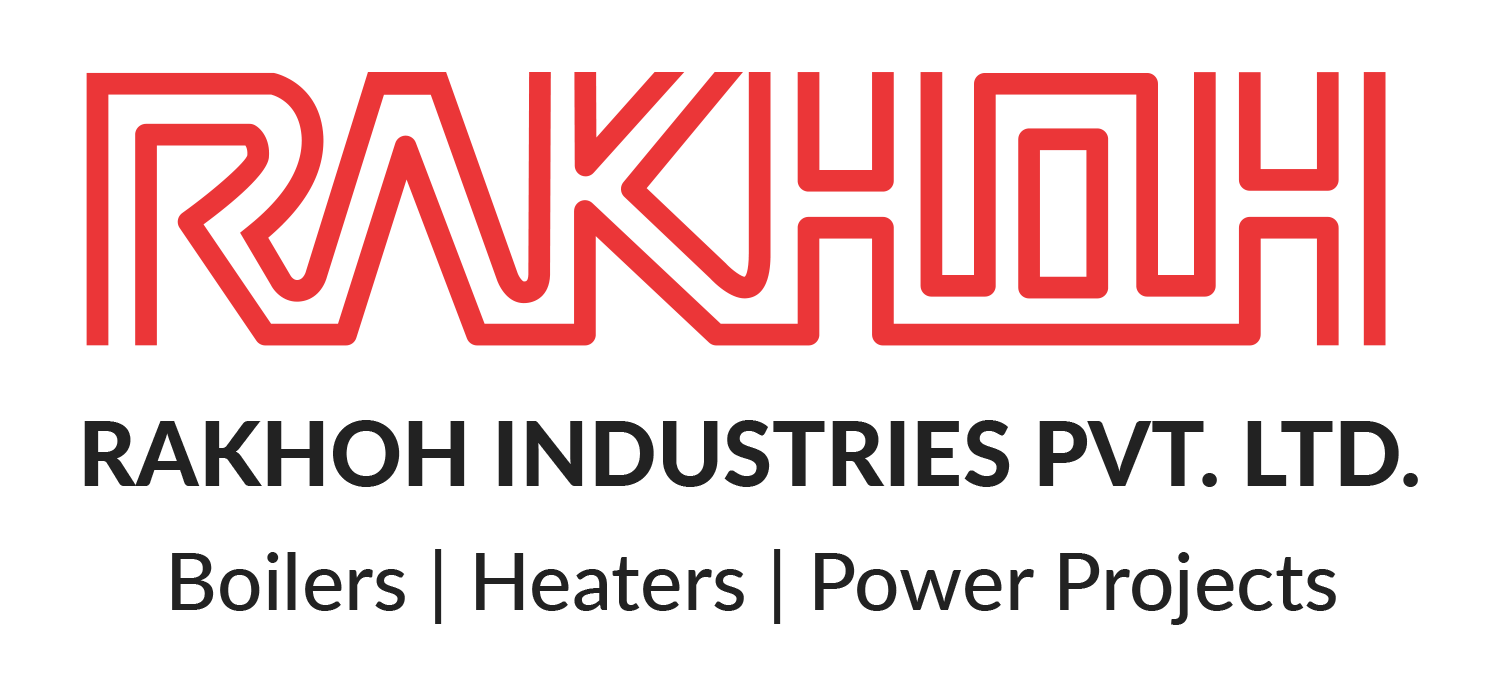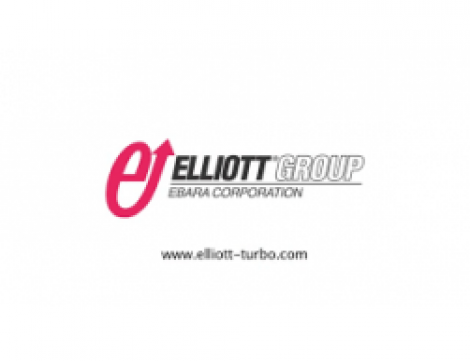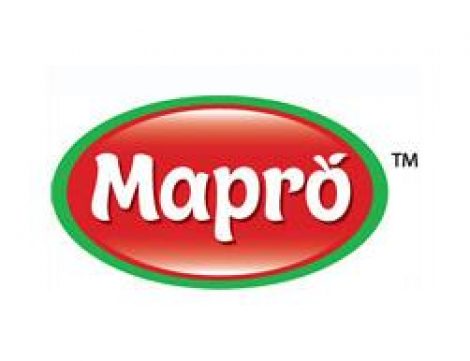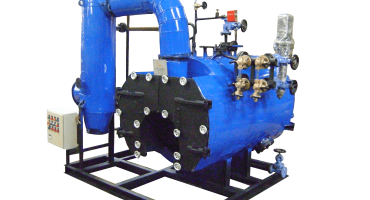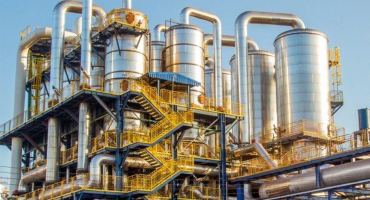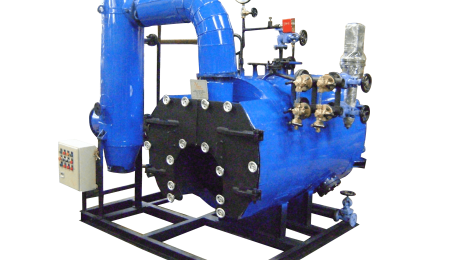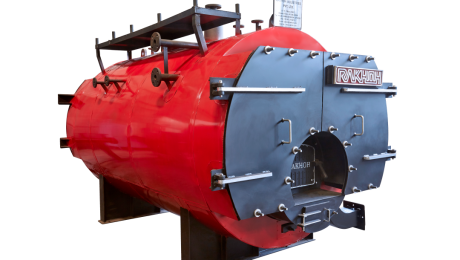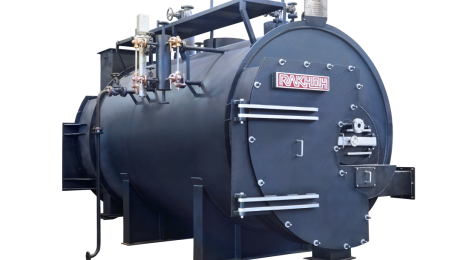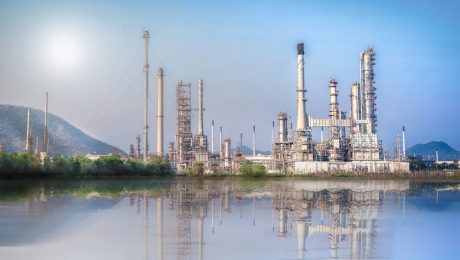Key Considerations When Choosing a Steam Boiler Manufacturer
It is an important decision to select the right steam boiler manufacturer holding long-lasting impacts on your operations and bottom line. Boilers are a significant investment, and selecting a reputable manufacturer ensures you get a high-quality product that meets your needs. Here are the key considerations to keep in mind when evaluating manufacturers of boilers:
- Check background and Prominence factor
A manufacturer’s background and stature are strong needles of the trustworthiness and quality of the product. Companies with years of knowledge will have an in-depth understanding of industry needs and specific problems associated with them. They are also more likely to have distilled their operations and products with time, resulting in more dedicated and well-organized steam boilers.
- Reputation and longevity: Look for manufacturers who have a robust industry reputation. This can be defined by customer testimonials, case studies, or awards won by that company. A positive track record from clients can also be a good indicator of constant high-quality service.
- Longevity: Firms with many years are often more long-lasting and dependable. They have a track record and will be sustainable in the long run.
- Range of Products
A manifold product portfolio reveals a manufacturer’s ability to cater to different requirements and applications. It’s essential to select a steam boiler manufacturer that delivers a broad spectrum of products, including:
- Water-Tube Boilers: These are ideal for high-pressure applications and are more efficient and compact.
- Fire-tube Boilers: Comprehended for their simple use, and maintenance, these are appropriate for low to medium-pressure applications.
- Biomass Boilers: These renewable sources of energy which is actually eco-friendly and use, sustainable operations.
A manufacturer with a wide product spectrum can deliver customized answers that match your exact needs, providing the best performance level and efficiency.
- Technical Improvements
To determine the reliability of steam boilers technology and innovation play an important part. Manufacturers that fund study and growth have the potential to deliver boilers with state-of-the-art features, such as:
- Automatic Control Systems: These systems enhance ease of operation and ensure precise control over the boiler’s performance.
- Security Instruments: Advanced safety features can prevent accidents and ensure the safe operation of the boiler.
- ESG-compliant Technologies: Inventions such as advanced combustion systems and economizers can greatly enhance the boiler’s fuel efficiency, lowering running costs.
Selecting a manufacturer that adopts technical improvements guarantees you get an efficient, contemporary, and safe boiler.
- Compliance with Industry Norms
Keeping up with industry norms and regulations is non-negotiable when choosing a steam boiler manufacturer. Certificates from identified bodies confirm that the boilers satisfy strict safety and quality needs.
- ISO (International Organization for Standardization): This certification confirms that the manufacturer pursues standardized methods for quality control.
- Other Applicable Standards: Depending on your location and industry, there may be other standards and certificates to regard. Ensure that the manufacturer complies with all relevant regulations.
Confirming these certifications provides you assurance that the boilers will be secure, trustworthy, and acquiescent with industry standards. A manufacturer with a broad product range can provide tailor-made solutions meeting your requirements delivering the best performance and efficiency.
- After-Sales Support and Service
Compact after-sales support is important for the performance of your boiler in the long term. The right steam boiler manufacturer should deliver a series of after-sales services, that usually include:
- Installation: Experienced installation assures the boiler is set up accurately and works efficiently from the beginning.
- Maintenance: Routine upkeep services can avert issues and expand the life span of the boiler.
- Availability Spare Parts: Easy availability of the spare parts guarantees that any required repairs can be done swiftly.
- Repair: Fast and efficient repair services reduce the time and aid a smooth operational flow.
- After-Sales Support and Service
Compact after-sales support is important for the performance of your boiler in the long term. The right steam boiler manufacturer should deliver a series of after-sales services, that usually include:
- Installation: Experienced installation assures the boiler is set up accurately and works efficiently from the beginning.
- Maintenance: Routine upkeep services can avert issues and expand the life span of the boiler.
- Availability Spare Parts: Easy availability of the spare parts guarantees that any required repairs can be done swiftly.
- Repair: Fast and efficient repair services reduce the time and aid a smooth operational flow.
Consider the manufacturer’s time that he takes to respond, and how deftly they handle service technicians to guarantee you receive trustworthy support.
- Cost proposition
While the primary cost of the boiler is an essential concern, it’s essential to consider the prevailing worth for money. Aspects to evaluate include:
- Maintenance: Boilers that are simpler to sustain can lower operational costs.
- Durability: A sturdy boiler with top-notch materials and pieces will last longer and need more infrequent repairs.
- Efficiency: A more well-built boiler can result in substantial cost conservations over its span of life because of low consumption of fuel.
Assess the entire cost of the license, which contains the purchase price, maintenance cost operational needs, and the desired lifespan of the boiler. This comprehensive system provides you select a boiler that delivers the most promising value in long-term.
- Customer Testimonials– By considering such customer reviews one can form a comprehensive understanding of what you can expect. Customer reviews deliver useful insights into other clients’ experiences which is considered as the index of quality service provided by the steam boiler manufacturer. Consider the following:
- Autonomous Reviews: Glance through individual and authentic or anonymous reviews that do not depend on any particular platform. From such an unbiased forum you can get the real picture.
- References: If you can get in touch with the clients of a specific company and get reference reviews then that bridges a lot of gaps in understanding and also can get valuable insights on the manufacturer’s service.
Conclusion
Choosing the best steam boiler manufacturer requires a complete consideration and evaluation of various factors from experience, reputation, innovation, standard protocols maintained, operational costs, after-sales support, customization of individual needs, customer reviews, and more. By taking into careful consideration of such crucial aspects, you can select a manufacturer that gives you high-quality and efficient steam boilers or bio mass boilers suited to your requirements.
- Published in Boiler
A Guide to Boiler Maintenance in Chemical Processing Plant
Steam boiler systems are irreplaceable in the chemical process industries. Among various manufacturing and process industries, chemical industries are considered hazardous places to work due to their high probability of volatile components, the risk of explosions, and fires. Therefore, boiler safety is the highest priority in the chemical industry. Comprehensive examination and maintenance of the steam boiler ensure the safety of the process plant. Read the article to understand the importance of regular boiler assessment and maintenance in the chemical industries.
Understanding the role of steam boilers in the chemical industry:
Steam is extensively useful in chemical processing for various operations ranging from heating fluids to driving equipment. The steam boiler system that generates the steam from water comes in many different varieties and sizes. Let us look at the types and designs of steam boilers for chemical process plants, as well as issues related to their safety, reliability, and efficient operation.
Steam boilers depend on the combination of radiant and convective heat transfer, consisting of a furnace section and steam-containing parts. A lower mean temperature difference between the hot gas and the steam generally requires an increase in the surface of tubing and boiler weight. High-temperature boilers need special alloys like nickel-based for their hot section.
Designs of Boilers in the Chemical Industry:
Among various types of designs in steam boilers for the chemical industry, a commonly used configuration uses a steam drum. It involves the water entering the boiler through the economizer and passing to the steam drum. The water passes through the down comers to the lower inlet water-wall headers, rises through the water walls, and changes to steam due to the heat generated. The steam enters the steam drum and moves through multiple steam and water separators and dryers in the steam drum. It eliminates the water droplets from the steam and the cycle. Forcing the water into the steam boiler requires a special set of feedwater pumps.
Another variant is a basic design termed once-through boilers. The system does not include a steam drum. The water travels through the economizer, the furnace wall tubes, and the super heater section in a continuous pass without recirculation. A set of feedwater pumps supplies the required force for the flow through the steam boiler.
Safety and Reliability of Operations in the Chemical Industry:
Proper control and safety devices are very essential to ensure the safety and reliability of the process operations. Safety or relief valves are the primary safety feature on a steam boiler, preventing dangerous over-pressurization. Safety valves are required in case there are any failures of pressure controls or other devices controlling the firing rate.
The majority of boiler issues, failures, and accidents are preventable in the chemical industries. One of the most effective ways to avoid such problems is condition monitoring. Most boiler issues do not occur suddenly but develop gradually over a long period. The ideal way to detect important changes that may otherwise be neglected is to comprehensively record condition data and carefully evaluate those data periodically.
Importance of Steam Boiler Maintenance:
Neglecting regular steam boiler maintenance can lead to serious issues. It is especially true in chemical processing plants, which pose a greater risk to the operating personnel due to the volatile substances they work with.
Ensuring regular inspection and maintenance plans ensure that the boiler is safe to operate. By following a schedule, any potential problems can be identified before it becomes a major issue. Safety should be the utmost concern, particularly while heating chemical reactors, which may result in serious harm to staff and damage to property.
The steam boiler maintenance is also necessary for efficiency. Neglecting steam boiler maintenance leads to increased expense due to reduced efficiency. If an issue is neglected during maintenance, it could lead to larger issues that impact the plant’s efficiency. A sudden downtime after a boiler failure can be extremely costly to the business.
Maintenance Checklist for Steam Boilers:
Regardless of a steam boiler type or design, it will always require regular maintenance. Below is a list of factors that should be examined during maintenance,
- Boiler Construction and Design
- Water Quality and Treatment
- Ample Space for Emissions
- Advanced Boiler Monitoring
- Regular Inspections
Conclusion:
Steam boilers have a crucial impact on the processing operations of chemical plants in terms of efficiency and productivity. Chemical industries require an ample amount of high-temperature steam for effective operations. Secondly, chemical industries tend to generate a large amount of emissions and waste heat. Therefore, it is essential to check that every requirement is met, before selecting a boiler manufacturer for a chemical plant.
Rakhoh Boilers manufactures highly efficient and reliable steam boilers preferred and trusted by various chemical process plants. Rakhoh’s Optipac and Waste Heat Recovery Boiler is an ideal choice for many chemical plants.
- Published in Boiler
Signs that indicate replacement for steam boilers
Steam boilers are vital equipment for steam generation in the process and manufacturing industries. Therefore, it is critical to know when it is time to replace an industrial boiler system. However, it is usually observed that facility managers wait for a steam boiler to break down entirely before replacing the unit. However, upgrading the steam boiler process plants can save a significant amount of money annually while also benefiting from increased efficiency and improved steam production when the boiler operates. Rakhoh Boilers being a trusted name as a boiler manufacturer in India has listed down some of the important signs that indicate the replacement of the steam boiler system.
Outdated Boiler System:
First and foremost, it is important to consider the lifespan of the steam boiler. If the boiler is older than 10-15 years, it is ideal to start looking for a replacement. It is true even if the boiler does not display any major faults. As the technology has advanced significantly in recent years, the old models are incapable of comparing with the efficiency levels, safety features, and smart control options of the latest steam boilers.
Frequent Breakdowns:
If there are occurrences of any type of boiler issues every week or topping up of the pressure, it indicates that things are about to change for the worst. The expenditure of the new parts, call-outs, and quick reparations can be spent much better on a replacement boiler that is efficient and reliable.
Boiler System Emits A Noise:
Sometimes, steam boilers are so outdated that the noises emitted from them are considered normal. On the contrary, the banging, gurgling, and kettling noises heard from the steam boiler indicate a boiler issue. If neglected, it can lead to severe damage in the process plant and breakdown over time.
Yellow-Colored Flame:
A steam boiler functioning properly ensures complete combustion with a blue flame. But, if the boiler flame is yellow, it means that there is a risk of carbon monoxide emission, which is a serious issue. It is a hazardous, odorless, and colorless gas that can prove to be fatal if exposure levels are overly high. The symptoms of carbon monoxide poisoning consist of dizziness, nausea, headaches, and fatigue.
Water Leakages:
If there are any water leakages in the steam boiler system, it can result in significant damage to other steam boiler components. Therefore, it is important to contact an engineer as soon as possible before things escalate and become dangerous.
Replacement Parts Difficult to Find:
If process plants find it difficult to procure the parts of the steam boiler for replacement, it is to be concluded that the system is outdated. It is a quite clear warning sign that the boiler’s days are limited, and replacement of the boiler is the need of the hour.
High Stack Temperature:
If the steam boiler faces unusually high stack temperatures, it is an indication of unsafe conditions and poor heat transfer. It may be caused due to poor water management, poor combustion, or low water level.
Poor Combustion:
Improper or insufficient airflow and fuel flow can lead to significantly noticeable pulsations and surges.
Reduction in Efficiency:
If the steam boiler system takes too long to operate or to generate steam, it showcases the inefficiency of the boiler system. In such situations, it is imperative to contact the boiler manufacturer for their expert guidance in replacing the system.
What is better– Replacement or Retrofitting?
Even if the steam boiler displays no decline in condition or performance, operations managers need to consider whether they should opt for a boiler replacement or retrofit. A boiler retrofit can offer the advantage of increasing the efficiency between 10% and 12%. On the other hand, a complete steam boiler replacement may offer even greater percentages depending on the boiler.
In either case, a retrofit boiler or a complete boiler replacement significantly reduces the future expenses of the process plant. Considering the average boiler consumes up to four times its original value in energy costs per year, it is easy to see how efficiency savings can quickly add up.
Conclusion:
Rakhoh Boilers is one of the trusted boiler manufacturers in Pune since 1983. With 38+ years of experience and expertise in thermal solutions, we deliver highly efficient and reliable industrial steam boilers, waste heat recovery systems, thermic fluid heaters, and boiler accessories to over 20 process industries in 26 countries worldwide. We provide excellent boiler services to boost the efficiency and productivity of the boilers.
Visit www.rakhoh.com for more details on our products and services
- Published in Boiler, Steam Boiler
Role of Steam Boilers in Textile Industries
Most manufacturing industries require steam boilers for accomplishing process operations. Steam is integral for various purposes of heating, drying, processing, sterilizing, etc. The textile industry is one such example that requires steam for its major processing stages. Textile is one of the ancient industries that have witnessed various changes and advancements over the centuries in terms of its processing. Several stages convert the raw fabric into a finished garment. Let us have a look at it in detail,
Yarn Manufacturing or Spinning:
The raw material or fiber and man-made fibers like synthetic or nylon are transported for yarn manufacturing. In this textile process stage, raw materials are converted into yarn for knitting, weaving, or crocheting. The raw materials are sorted and cleaned for creating the final yarn or thread.
Fabric Manufacturing or Weaving:
The next stage of fabric manufacturing involves transporting yarn from one machine to another in order to create a length of fabric.
Wet Processing:
The fabric wet processing operation includes dyeing and finishing of the fabric. The dyeing process introduces colors to the fabric, while the finishing process adds chemical properties such as anti-pill, soil release, flame retardant, etc., to enhance the fabric quality. The printing process includes inkjet printing on fabrics.
Garment Processing and Finishing:
The final process in the textile industry includes designing and sewing the final garments. It is followed by spot removal, ironing, and finishing before transporting it to markets.
Role of Steam Boilers in Textile Processing:
Steam boilers are indispensable in textile processing as the major process operations depend on steam or hot water generated from boilers. Textile processing units consider every factor before selecting a steam boiler that meets their demands effectively. Here are the primary stages of the textile process that requires steam or hot water,
Pre-treatment:
The pre-treatment phase is one of the important stages in the textile process that involves the removal of dirt or impurities from the fabric before the dyeing and printing process. The pre-treatment stage requires efficient steam boilers to produce clean and pure steam or hot water.
Dyeing:
The dyeing stage involves adding pigments or dyes to fabric to color them. Although the dyeing process can occur at any stage, it primarily occurs after the yarn manufacturing or fabric manufacturing stage of the textile process. The transfer of dye to the fabric requires a precise amount of moisture and heat provided by steam. Steam boiler enables the heating of water and steam at the determined temperature that is required to dye the fabric in exact color.
Printing:
The printing stage in the textile process is similar to dyeing except that printing includes patterns or designs to the fabric, whereas dyeing includes uniform coloring. Depending on the type of fabric, the printing stage uses several methods. Steam boilers are essential for providing the precise amount of heat and moisture required for the printing process.
Finishing:
The finishing stage of the textile process involves several steps. It includes the removal of wrinkles from fabric. A steam boiler is vital for providing steam for the ironing purposes that provides excellent finishing.
Factors to Consider while Choosing Steam Boiler for Textile Process:
Deciding a steam boiler for the textile process is imperative to ensure optimal efficiency and productivity. Managers in textile processing units consider the following factors before determining their choice of steam boiler,
Seamless with Fluctuating Demand:
The steam requirements in textile process operations are fluctuating and require robust steam boilers that can effectively handle the changing demands. In such situations, steam boilers with a quick start or shut-off are best-suited for processing. Comparatively, water tube boilers perform better than fire tube boilers with the fluctuating load.
Fuel Efficiency:
Due to fluctuating demand for steam, the textile process faces the difficulty of fuel wastage that leads to excess costs. Therefore, the steam boiler must perform effectively and ensure complete combustion to ensure optimal utilization of fuel.
Easy Maintenance:
Steam boilers in the textile process operate throughout the day and hence require regular maintenance for enhanced results. Negligence of boiler maintenance may cause boiler failure, resultantly shutting the textile process operations and leading to significant losses.
Calculating the Capacity and Heating Parameters of Steam Boilers:
The capacity of a steam boiler depends on the heating load that includes heat losses in boiler tubes and pipes. Additionally, the heating parameters like temperature and pressure must be determined.
Conclusion:
With 38+ years of experience and expertise in thermal solutions, Rakhoh Boilers are the leading boiler manufacturer in India and overseas, with more than 3000 boiler installations in over 26 countries globally. Our Combo X model is the preferred steam boiler model in the textile industry. We have delivered our efficient steam boilers in over 360 textile process and dyeing units. Catering to 20 process industries worldwide, we manufacture steam boilers, waste heat recovery boilers, thermic fluid heaters, and boiler accessories. We offer the best boiler services like boiler automation, steam trap assessment, energy audit, annual boiler maintenance, etc to ensure hassle-free operations of steam boilers.
Visit www.rakhoh.com to know more about our products and services.
- Published in Boiler, Steam Boiler
Prevention of Steam Leakage in Boilers
Steam Boilers are of utmost importance in the process and manufacturing sector to ensure high-quality production or power generation through steam. Therefore, the steam produced in the boiler must be of superior quality. Various parameters are considered to ensure seamless operations of the steam boiler. Steam leakage is a phenomenon that causes loss and inefficiency in the boiler system. Steam is a high-value commodity and leads to a higher value with higher pressure. Therefore, it is necessary to take action to repair steam leaks as soon as they occur. Steam leaks can immensely affect production, cause safety issues, and increase maintenance costs.
An Overview of Steam Leakage in Boiler:
After a few years of operation, steam boilers tend to leak steam due to outdated gaskets, fittings, and other areas. Without proper maintenance and regular inspection, the number of leaks and the volume of leaked steam only increase tremendously.
The most common locations of finding steam leaks are:
Steam leaks from valves and steam traps are further classified into external leaks, such as those from gland packing, and internal leaks that cause steam escaping through the seat and into the outlet. In addition to higher energy costs, steam leaks waste boiler water and chemicals that can prove hazardous to the operating staff and the boiler system.
One pound of 100 psi steam consists of about 1,200 BTU. Considering the steam is produced at 85% efficiency, the input energy is 1,200 / 85% = 1,411 BTUs per pound. Therefore, 1,000 pounds of steam requires at least 1.4 million BTU for its production.
The amount of steam leaked from a steam trap in a normal operation depends on the type of trap. Similarly, in the case of a steam trap, the steam leaking from even one failed trap can result in a significant financial loss.
Preventing Steam Leaks in Boiler:
Prevention of Steam Leakage Due to Pipe Fittings:
The primary causes of steam leakage from the pipe and screwed connectors are:
Stress from pipes expanding or contracting due to the heat of the steam
Threaded components that have loosened due to that stress, and
Deterioration of gaskets.
The nuts and bolts of the fitting can be loosened as pipes contract due to the reducing steam temperature. It consequently results in causing a gap to open up between the two pipes for releasing the steam.
If the operating personnel detects a steam leak, it requires more than the tightening of the screws on the fitting or replacement of the gaskets. It is essential to examine the cause of the leak and accordingly change the location of fixed pipe supports or add expansion joints. If prompt measures such as these are overlooked, the steam leak may occur again in the future.
Prevention of Steam Leakage Due to Valves:
The majority of external leaks from valves emerge from gland packing. Due to the design of the valve, gland leaks can be avoided temporarily by tightening the valve.
However, when the valve is opened and closed frequently, it may cause leaking again within a short period. A bellows seal valve is preferable in such situations as it is highly resistant to gland leakage due to their bellows that closes off the interior and exterior gland packing.
Interior leakage occurs when steam is released through the valve seat and flows through the outlet as the valve is in the closed position. Interior leakages are not visible from the outside, and therefore, are difficult to spot. Detecting interior leaks requires maintenance tools such as a stethoscope or a device that measures ultrasonic vibrations.
Steam leakages are common from the seat of valves with both adjustable valve openings. It can be prevented by using adjustable and closable valves that eliminate the need for dual-function valves. On the other hand, another effective method of preventing internal leaks is installing a separator that removes the condensate entrained within the steam. The introduction of dry steam prevents the valve seat from deteriorating.
Prevention of Steam Leakage Due to Steam Trap:
Leaks take place when the device stops functioning properly in valves and pipe fittings, but for steam traps, it is also important to consider the loss of steam that occurs during operation.
Steps to Reduce Steam Leaks in Boiler:
Practice a regular maintenance schedule on the steam trap. Track the checks and maintenance to find problems before it becomes challenging.
Conclusion:
Rakhoh Boilers provides efficient industrial steam boilers and the best thermal solutions since their inception in 1983 as boiler manufacturers in Pune. We have successfully installed 3000+ boilers in over 26 countries worldwide for 20 process industries.
For more details on our products and services, visit www.rakhoh.com
- Published in Boiler, Steam Boiler
